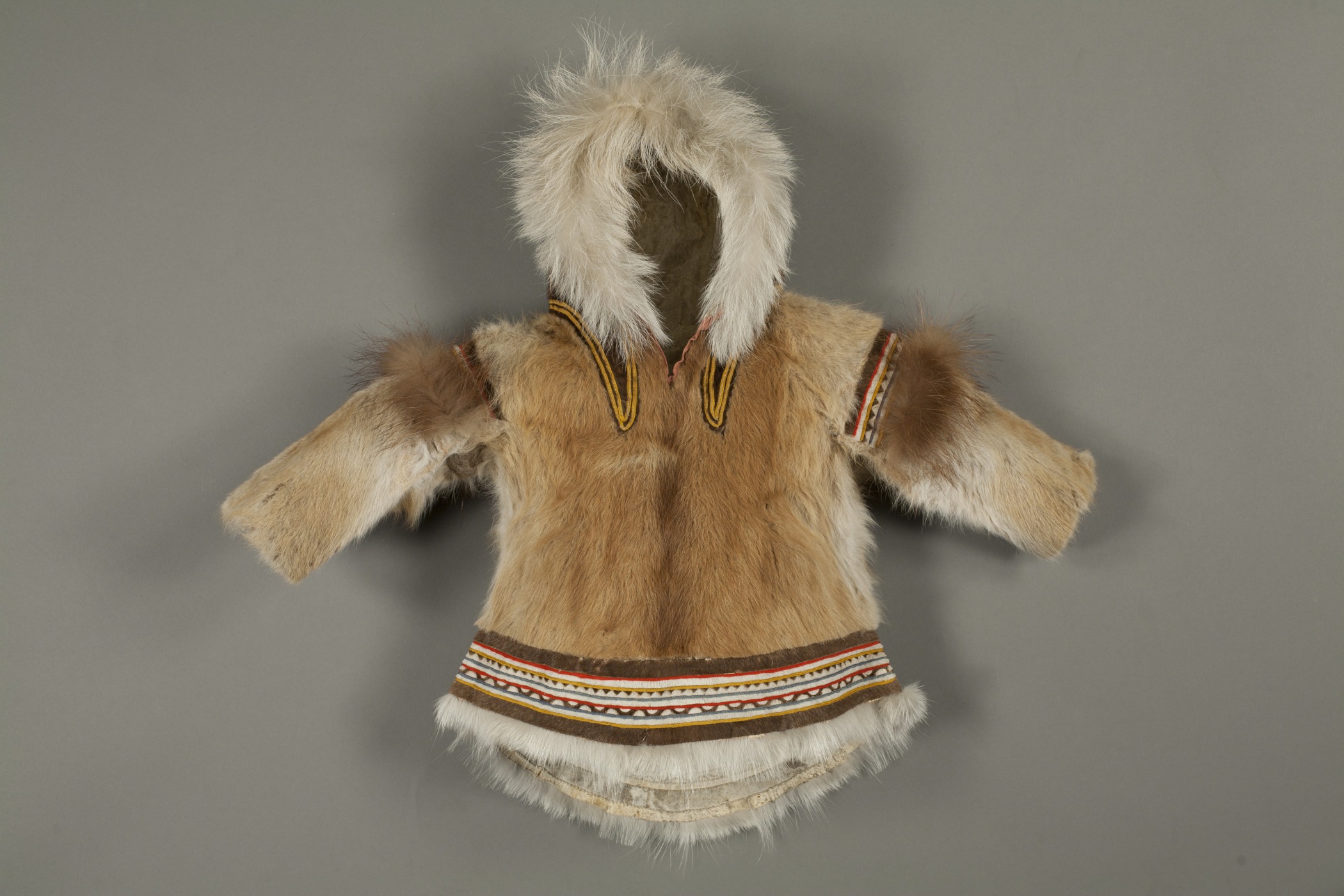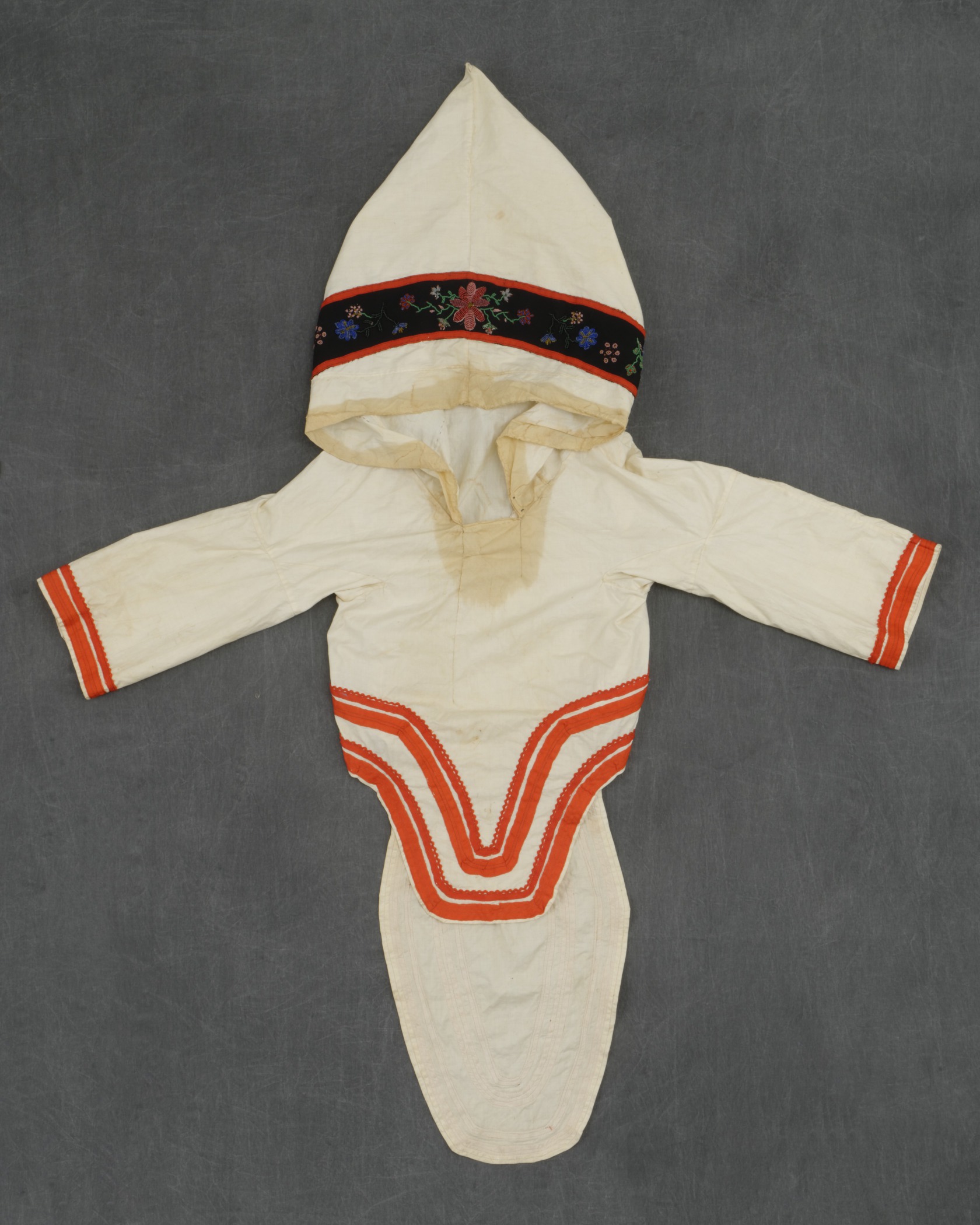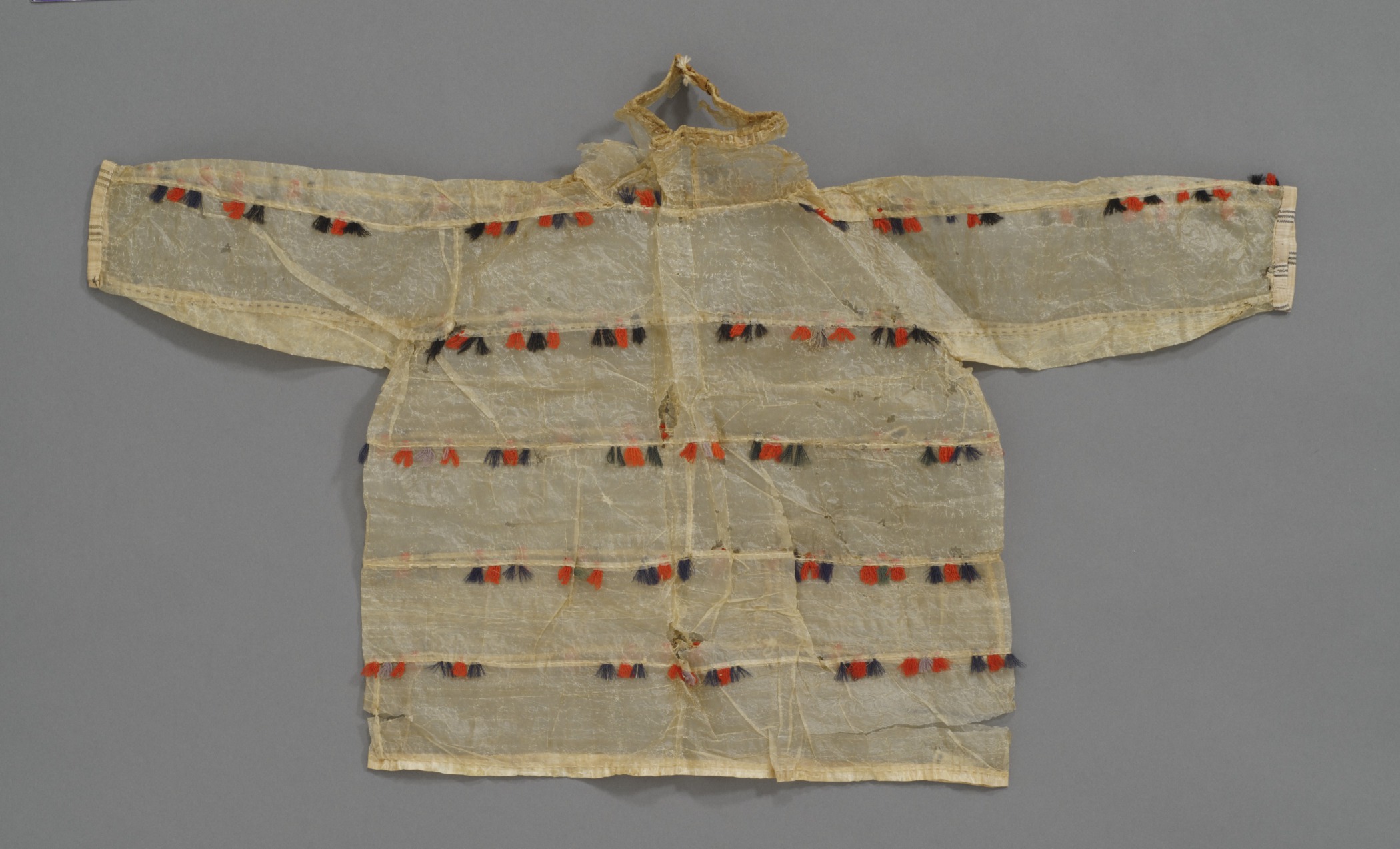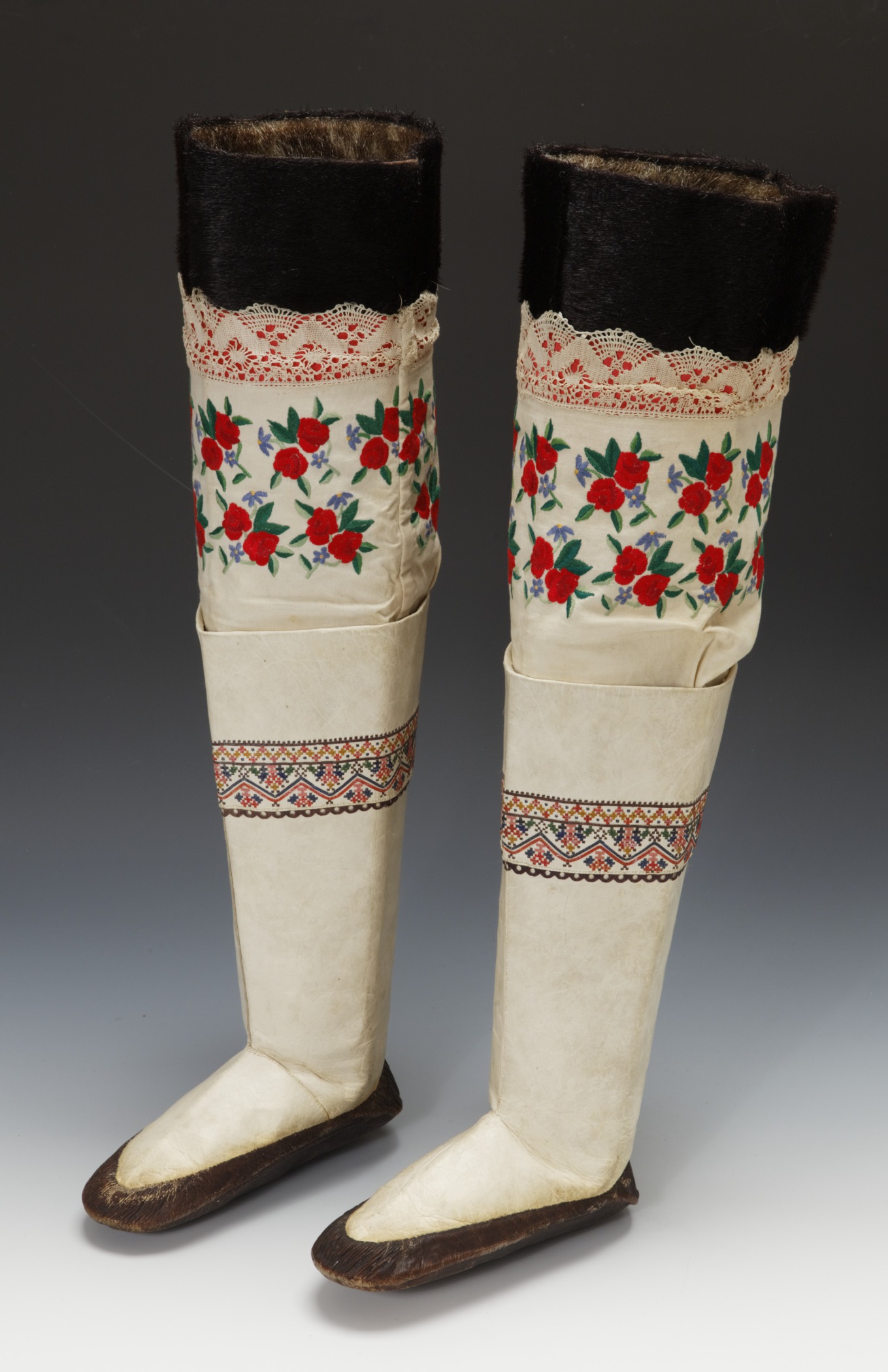Sugpiaq (Alutiiq)
Child’s bear gut parka
- Collected 1905
- Bear gut (intestines), wool yarn, commercial thread, cotton cloth trim, and leather
- Height: 14 9/16 in.
Hood Museum of Art, Dartmouth College: Bequest of Frank C. and Clara G. Churchill; 46.17.9801
visibilityLook & DiscussStaying warm and dry in wet weather not only made life more pleasant, but was also often necessary for survival. Men hunting or fishing in kayaks or boats were exposed to frigid waters in freezing temperatures. Indigenous cultures discovered an ingenious way to create waterproof rain gear—using animal intestines! The intestines of bears, seals, walrus, and other large animals were removed, cleaned, filled with air and stretched out on the ice to dry. They could then be cut into strips and sewn with sinew using a special overlapping type of fine stitching to create waterproof seams. Sinew swells when wet, sealing the stitching holes surrounding it to ensure a water-resistant garment.
explore the object
Intestine looks a bit like aged plastic. It is typically see-through and crinkly. It is surprisingly lightweight. The maker had to sew the parka in bands of strips because intestines are tubes. When they are filled with air and dried, they expand. Cutting each section lengthwise forms long, thin pieces. Sewing together these thin pieces creates the distinctive banded look of this parka.
The jacket’s maker embellished it with tufts of black and red thread, a color scheme favored by the Sugpiaq (SUHK-pee-ack) and Alutiiq (Ah-LOO-tick) peoples of the western Arctic. Earlier artisans might have used tufts of animal fur as decoration.
Gut parkas are not warm. They were usually worn over another, warmer parka. Every gut parka has a drawstring hood that can be pulled tight to protect the head of the wearer.
related object
Unangax̂ (Aleut), fish skin mittens, collected about 1940. Fish skin, caribou hide, and button, 13 3/8 × 7 1/16 in. Hood Museum of Art, Dartmouth College: Gift of the Estate of Corey Ford, Class of 1921H; 169.75.24864.
People also needed to keep their hands and feet dry in wet weather. These mittens were made from fish skin! What better animal skin to use to survive wet weather? Fish skin requires tremendous skill to cut, dry, smoke, and sew into mittens, boots, and pants. The method used to sew the seams on these mittens forms a waterproof seal.
learn more
How does each parka differ from people to people?
To learn more about the art of sewing gut, visit this Smithsonian National Museum of Natural History website to watch the video Material Traditions: Sewing Gut.




